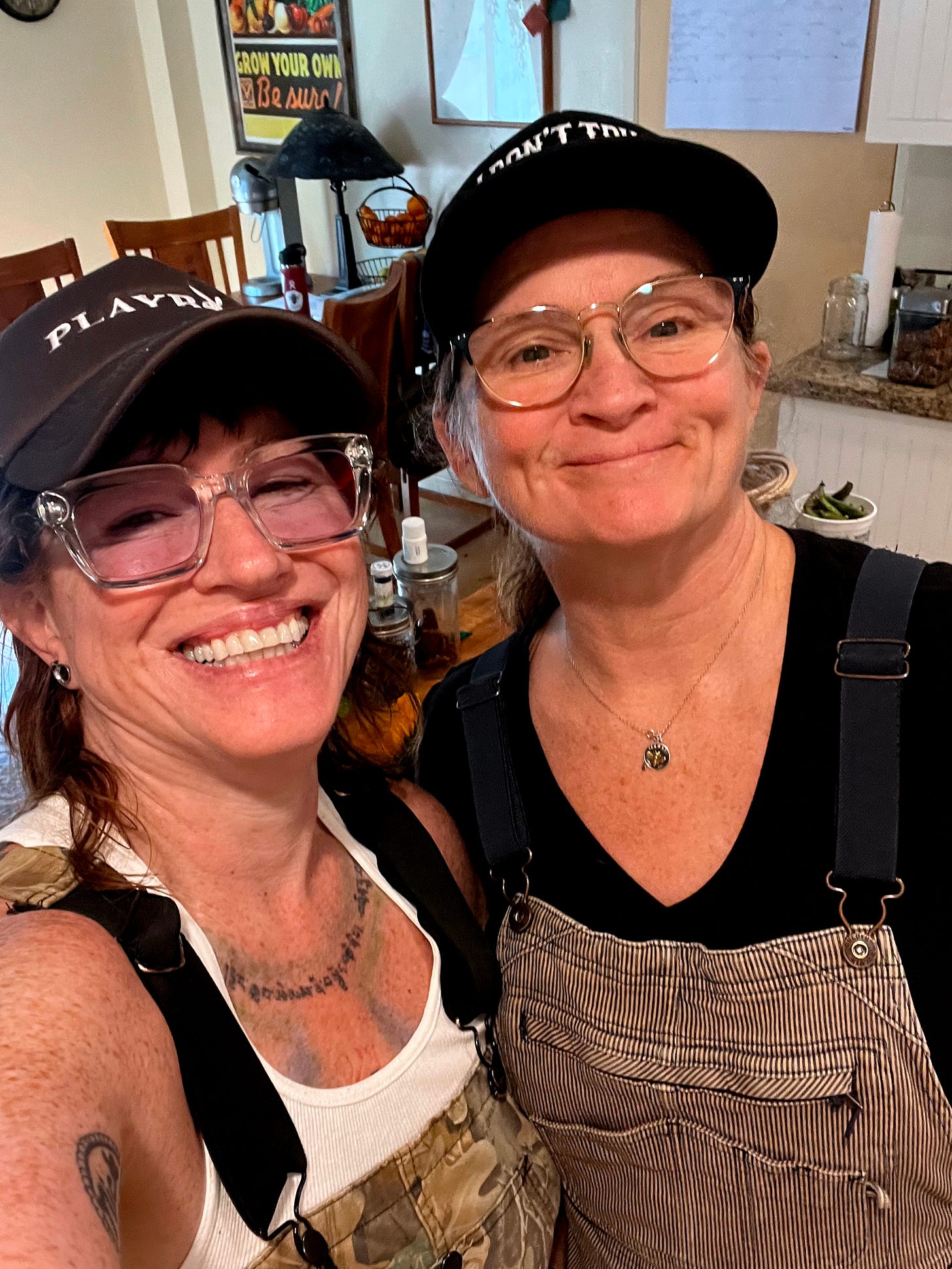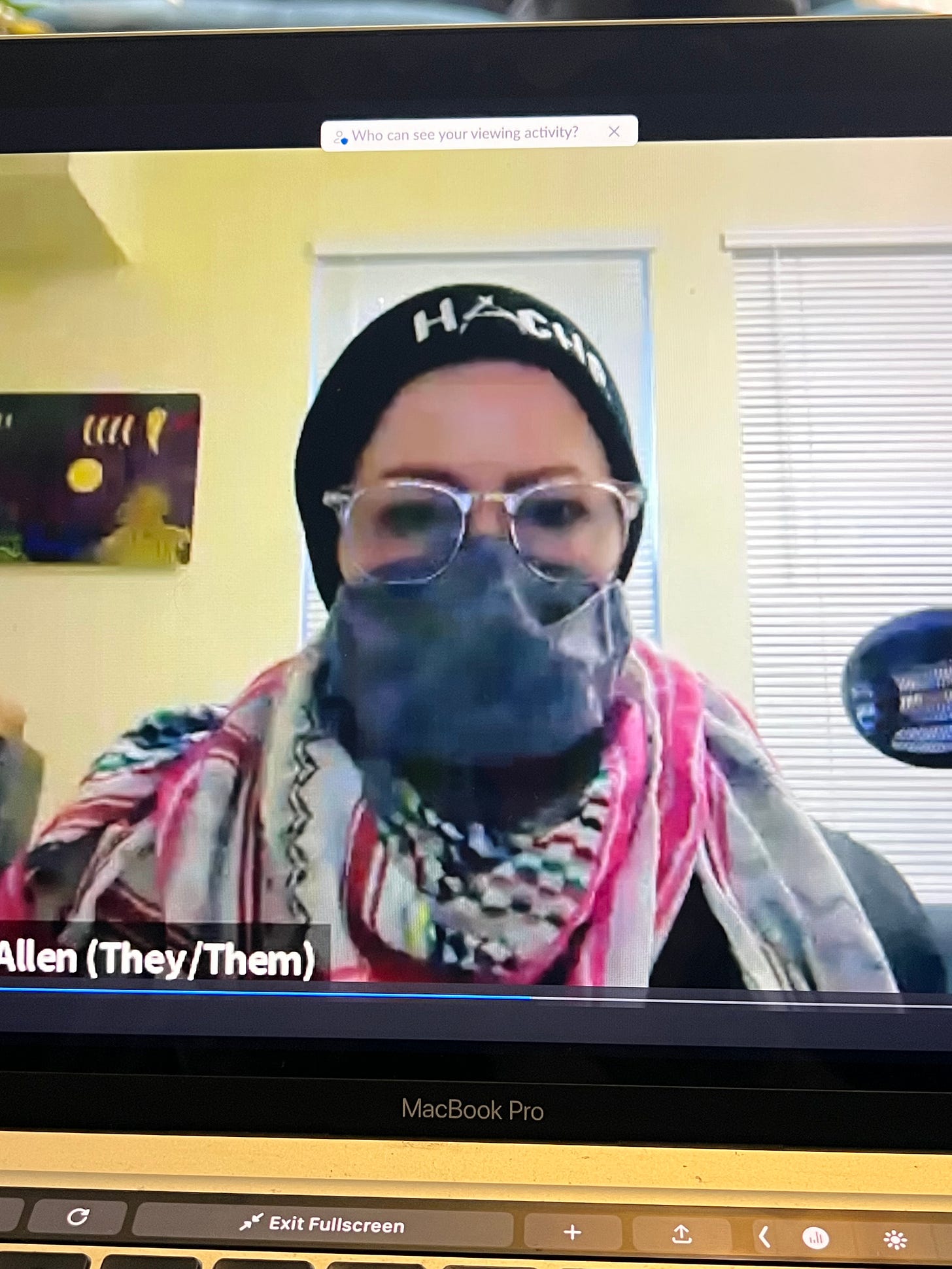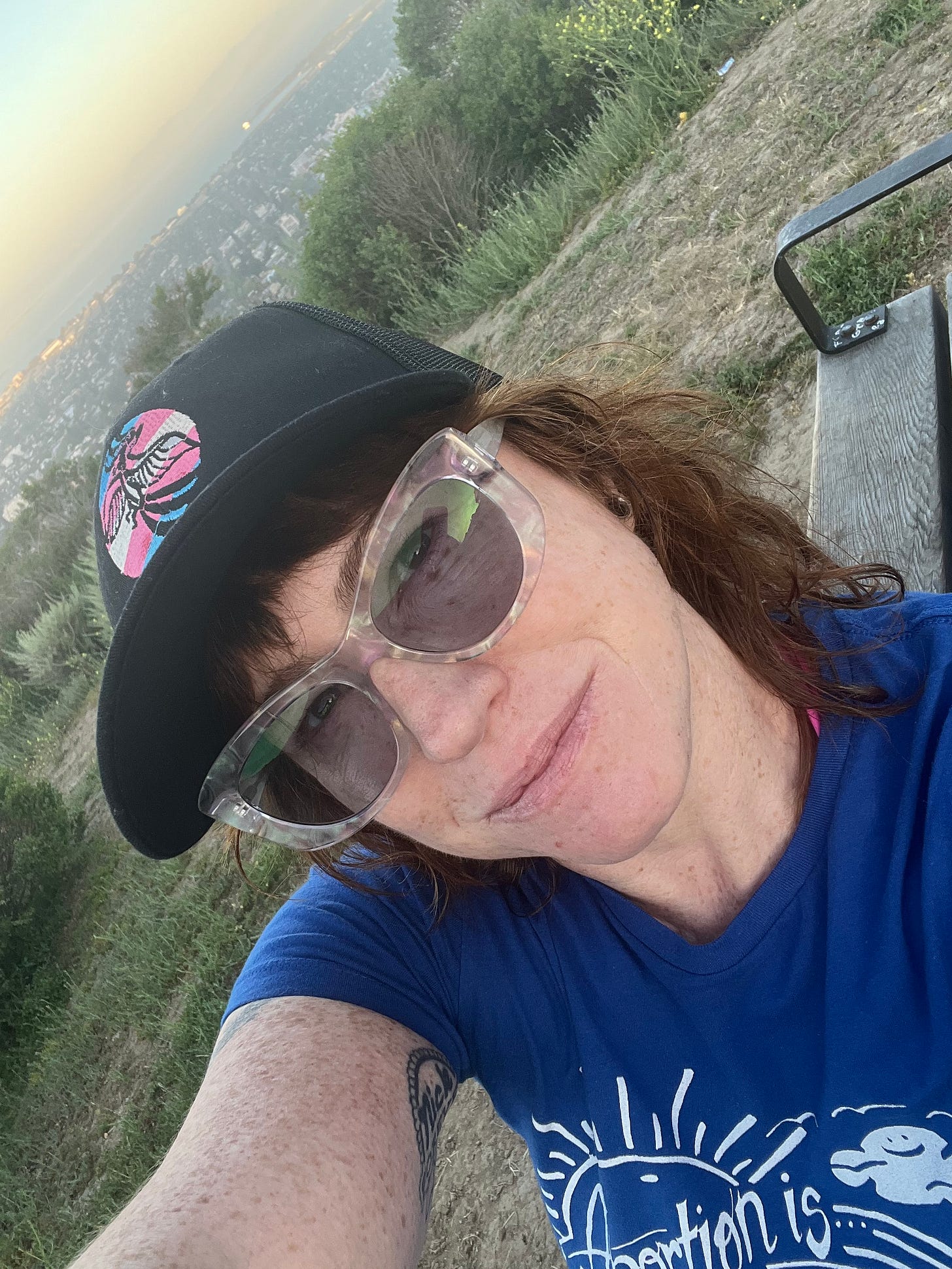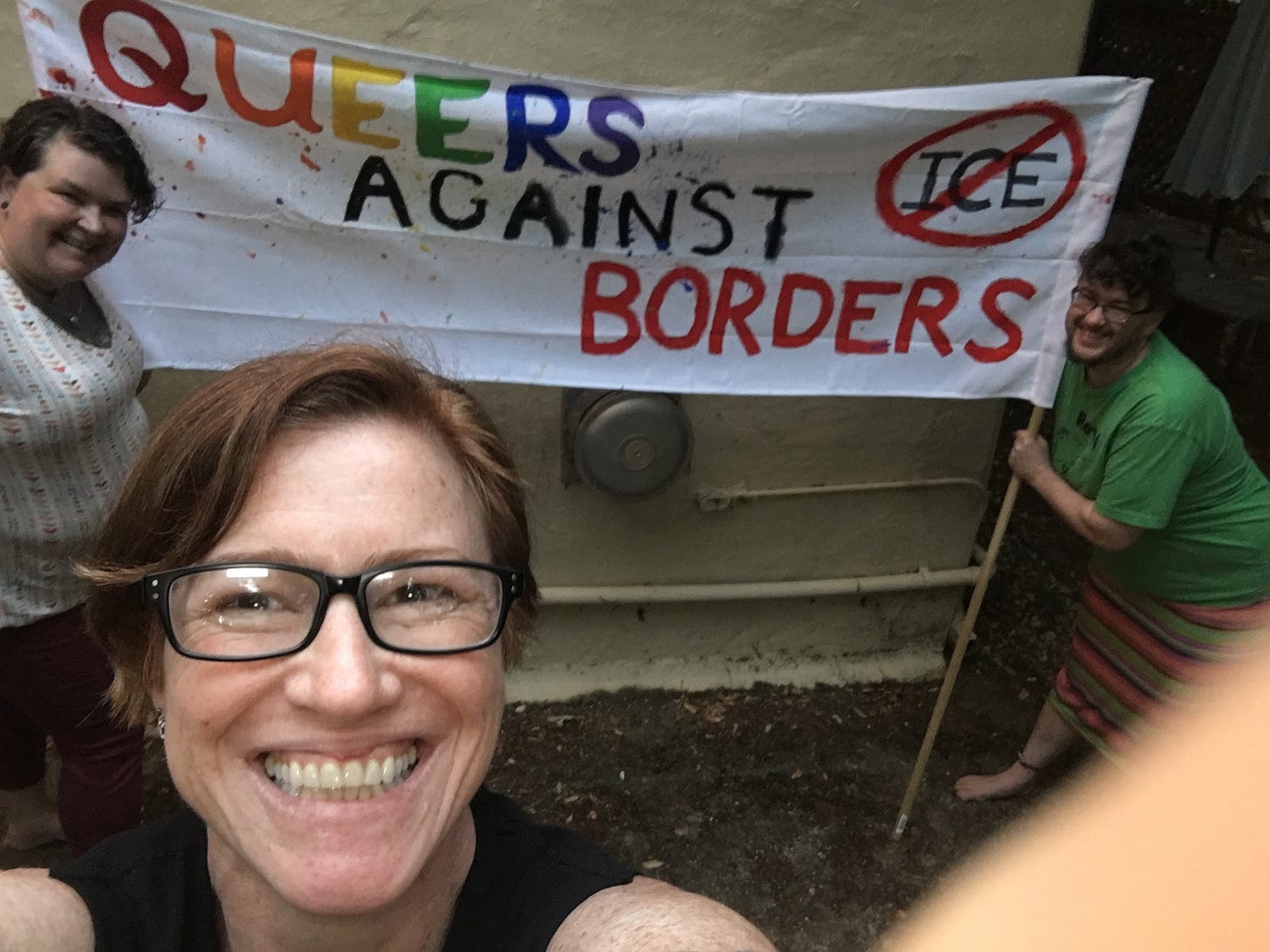As the executive director (ED) of a queer nonprofit, I get to experience both the joys of LGBTQIA+ leadership and the quagmires of it. There’s nothing that could motivate me to show up and “punch in” daily life truly values-aligned work does; being able to center our community’s needs, from the staff level outward, makes it worthwhile to show up day after day and apply myself in the late stage capitalist hellscape that is the work-a-day world.
It’s easy, at times, to allow myself to be blinded by the rosy parts of the job. The nonprofit industrial complex is by no means immune to the ills of late stage capitalism, but as one of my loves (who also works for a values-aligned nonprofit) and I were discussing over the weekend, we’re both overall pretty amazed to be able to engage in work that feeds our souls, and pays—most of—the bills. (I mean, don’t let’s get carried away; we are talking about marginalized service groups here, after all.)
I love being an ED because it’s never boring, and I get to keep constantly learning and improving my skill sets. There’s always an opportunity to tackle something new, and there’s always a puzzle to solve. I get to use all of the tools I’ve learned, developed, and honed over the years as an entrepreneur, a writer, a coach, and an activist. I get to both practice collaborative, visionary, high-level thinking, and to dive into the nitty-gritty details to help bring those dreams to fruition. I love the balance of macro/micro thinking that’s required by the job, and I love that my diverse work and organizing history has made me such a great match for addressing the varied responsibilities.
I love working for queer orgs because I get to be truly authentic and show up as my whole self. I love it even more because as ED I also get to do everything in my power to make it possible for my staff members to show up as authentically as they wish to in the workspace as well. And together, we get to create the space for the rest of our community to show up that way, too. Furthermore, as a values-driven person, I get a lot of pay-off: working for a queer org allows me to safeguard queer rights, support queer mental health and wellbeing at all internal levels of the organization and in our services community, and do everything I can to make sure folx have access to the services we offer.
The Less-Rosy Aspects of Queer Leadership and Queer Nonprofit Work
The less rosy parts are those tempered by the fact that working in queer-focused spaces carries a lot of its own weight. As I wrote about in my piece on lateral aggression in the queer community, we queer folx collectively have understandable levels of mistrust around leadership. And, at that, being a leader in queer spaces is often a liability as much as it might be an honor and a privilege.
There’s the fact that when working at queer nonprofits, most of us must take pay cuts compared to working at even other (non-queer) nonprofits. Queer nonprofits get less than 1% of national philanthropy dollars. Adding insult to injury, across the nonprofit terrain, female-identified executives get paid 9% lesson average than male executives. And, according to the Human Rights Campaign (HRC), overall, women currently get paid .87 on the dollar. However, nonbinary, trans, and otherwise gender-expansive folx get paid .70 on the overall dollar. Trans men make .70, and trans women make .60. And, BIMPOC (Black, Indigenous, Mixed ethnicity People of Color) have a multitude of additional pay differences, with gender-expansive and trans folx losing out over and over again.
And of course none of these inequities are limited to leadership levels.
Then there is the undeniable fact of ongoing traumatization and retraumatization that’s active and alive in most queer folx day-to-day experience. From microaggressions to overt physical and psychological intimidation and threats to well-being, from personal to systemic, it’s hard sometimes not to feel like the whole world is out to make life really challenging for us. Unequal application of existing laws by law enforcement, proposed legislation, and ongoing experiences of personal threat all coalesce to make one’s day, at times, a veritable battleground.
Queer Traumatic Stress Spillover
The term traumatic stress spillover was coined in reference to first-responders and their on-the-job exposure to vicarious trauma, and how it impacted their personal lives. Here, I’m making an analogy between this sort of traumatic reiteration, and how it shows up for queer folx. The trauma cycle queer folx live through on a daily basis, illustrated in the section above, leads to what I term “queer traumatic stress spillover.” In scientific terminology, this relates to something called queer allostatic load, which is basically the resting stress level of being alive as a queer person. This level ranges from stressful to traumatic–depending partially on the availability of social supports, experiences of rejection, and exposure to ongoing sociocultural and personal stressors. Queer traumatic stress spillover happens in our personal lives, in our relationships, and it happens in the workplace.
Trauma in the Workplace
Cultural trauma and personal traumas are intermingled. As queer folx we experience not only the immediate stressors of day to day life, but ongoing cultural threats to our long-term wellbeing. We experience cultural threats of violence and terrorism, in addition to the daily reality of stultifying inequity and inequality, from lack of access to safe bathrooms to a lack of affirming healthcare options to the fact that we make less for the work that we do, whether working in a queer org or not, we are facing an mountain of crap to fight against.
Add to this the fact that most of us are carrying work-specific trauma forward from jobs that were not friendly to us. According to the Williams Institute, Roughly half of queer folx in the U.S. have experienced harassment or discrimination in the workplace. Fourty-seven percent of queer folx working in the US are not even out to their supervisors. And, even staying in the proverbial closet at work doesn’t guarantee safety; Seventeen percent of those who are not out have also experienced harassment. When talking about trans and gender-expansive folx, again those numbers jump. Fifty-five percent of trans and nonbinary folx have experienced workplace discrimination, as opposed to thirty-one percent of cisgender LGBQ folx. Thirty-three percent of LGBTQ folx have left a job because of mistreatment. And of course these numbers are even more stark for QTBIPOC.
It is no wonder we carry this burden into our working environments. And when it’s a queer focused org that is staffed with queer folx (as all should be, in my opinion–nothing about us without us) it gets even more complicated in some ways, since we are all showing up continually nursing fresh wounds.
Trauma impacts our nervous systems. It can result in both emotional and physiological outcomes; from emotional dysregulation to gastro-intestinal upset, the impacts can be universal. Dealing with (or not dealing with) the pile-up of unaddressed ongoing experience of traumatic events can result in folx living with fragmented attention spans, an ongoing crisis mentality, interpersonal conflict, insecurity, a sense of ungrounded urgency. All of these can, obviously, lead to less than ideal workplace outcomes. It may result in erratic behaviors at work and outside of work, chaotic substance use, showing up late, unplanned absences, and incidences of lateral aggression.
That said, there are many benefits to the reality that we’re all in the same boat; when well addressed, we are all operating ideally from a trauma-responsive, or at least a trauma-informed, space. On a good day, we hold space for our individual and collective healing.
On a bad day, sometimes it’s hard for any of us to do more than tread water.
The Place of Trauma-Responsive Leadership in Queer Spaces
All of this being the case, it is essential that queer leaders work and lead from a trauma-responsive frame, and address queer traumatic stress spillover in a conscious way in queer workspaces. The main objectives of trauma-responsive leadership are to normalize the trauma experiences, prioritize physical and psychological safety, and resisting retraumatization in the workplace. These objectives rely on leadership’s ability to communicate with compassion, integrate resilience-focused leadership methods, prioritize self- and community-care, and foster leadership skills in others.
The first thing that makes this work possible is one’s ability and willingness to do one’s own work to address lifetime and ongoing trauma. I get the therapy I need. I keep myself on top of my wellness game. I practice good work boundaries, and take the time off that I need. I engage in a full life outside of work, including investing resources in passion projects. I journal, and reliably practice gratitude, and hike, and dance, and workout, and regularly do things that help my nervous system regulate.
From there, I can begin to impact the systems around me. Here are some ways that I have worked toward building a culture of safety at the orgs where I have been honored to serve:
1. I advocate and work toward better pay for my staff. Economic insecurity is traumatic itself, and increases the occurrence of traumatization. When we can reliably pay all of our bills, stress levels reduce. This is a truly basic element of safety, and when our community experiences poverty at twent-two percent (as compared to straight folx sixteen percent), it’s obviously a systemic issue. But we can do our part to change it.
This item is generally a long-game. It takes strategy. At most orgs, it’s not going to happen overnight. It takes educating funders, your board of directors, and the rest of your stakeholders on the importance of paying staff well as a starting point. (Many seem to believe that we should be honored and happy to be getting paid at all for doing work that we love. I call bullshit on that.)
Here are some steps I have taken to build toward equitable pay:
1a. Ensure pay equity by contracting for and conducting an organizational payscale equity analysis or audit that takes into account both internal and external pay scales.
1b. Create a navigable and transparent path toward advancement in your organization.
1c. Create an equitable, transparent, standardized pay range for your organization, and clear steps toward receiving pay increases.
1d. Source additional funding to increase salaries in alignment with the equity analysis and equity plans.
2. I find ways to increase non-monetary work benefits where possible, and especially when monetary compensation rates are below industry standard, and in the process of working toward parity.
2a. Generous PTO policies can be a great bonus when times are tight for your organization.
2b. Funding one-hundred percent coverage of staff (and ideally dependent) health benefits is a great goal to give your org. (I have done so by increasing contract and grant fringe to twenty-four percent on all contracts and grants, where permitted.)
3. I encourage a culture of rest. Make rest, self-care, and community-care norms at your org. Here are some basic steps toward normalizing rest at the organizational level:
3a. Use your PTO, and encourage other upper-management to do so. This helps to set the standard of expectation that staff will do the same. Model the reality that no single person is needed to be hands-on-deck at all times. Take vacation time. Take sick days and wellness days, and be open about why you are doing so to model that it is alright for staff to do the same.
3b. Allow staff standardized paid self-care time. I have instituted a floating hour a week of on-the-clock self-care time that allows staff members to prioritize a self-care activity, whether therapy, yoga, a walk, coloring, or a class they want to take. For one hour a week they get paid to take care of themselves.
4. I fund and prioritize staff development stipends. I make sure staff can learn on the job. This benefits both the org and the team member. An engaged workforce is a creative workforce, and learning can help brains and nervous systems heal.
5. I help build a culture of co-mentorship. We all have a lot to learn from one another. In building from a co-mentorship model, I encourage rhizomatic and lateral leadership models which value each person as a valuable element of the whole, and a nexus in their own right. This helps to underscore a sense of safety and belonging.
6. I improve organizational mechanisms of feedback and foster accountability, at all levels of the organization. This contributes to an overall sense of safety.
7. I model a “failing forward” mentality and practice maintaining a beginner’s mind. In other words, I work to maintain a learning–and teachable–attitude and environment. I cannot be both responsive and closed down. When I stop learning, I start to atrophy. In the workplace, I model a teachable attitude and try to create an environment where experienation and learning are experienced as positives. And, I take responsibility and accountability when I don’t hit the planned mark. These practices allow space for the whole team to stay teachable and continue learning.
8. I listen, and listen some more. When things feel uneven at a staff level, I listen for the background hum. When changes need to be made, I enter into formalized and less formal opportunities for listening. I do not take steps for the organization until I understand the likely ramifications, and possible outcomes. Slow, sustainable change is far preferable, when possible, to rapid and destabilizing change–especially when we are living with dysregulated nervous systems.
There is always more that can be done, but these are some of the basics that I find increase a sense of safety and boost morale. Bit by bit the changes add up.
Living into the Possibility of Queer Joy
Finally, perhaps the most important aspect of trauma-responsive queer leadership is to live into the possibility of queer joy. We can create conscious eddies and islands of safety, respect, and good will. We can celebrate queer joy where we find it, and foster it where possible.
Imagine a world where our queer workspaces were consciously designed to be sites of queer revolution and evolution. Imagine them as places where we come to learn, rest, grow, build, and create wholeness together. Where we can trust in the reality of our collective healing and liberation.
We can—and must—create this healing together, toward collective liberation. It will happen in fits and starts perhaps. But if it can’t start here, in queer-focused spaces, then where can it begin? And if it cannot be created by us queer folx, then by whom can this world be created? We can be the change we wish to see in the world, and as queer leaders it is imperative that we do.











This was such a remarkably thoughtful and profoundly impactful article. So let me start by saying, "Thank you!" I have been struggling to articulate so much of what you covered for an article on my Substack and you've said nearly all I could ever say, particularly about the Queer allostatic load and vicarious trauma.
Having worked for Queer-centric nonprofits for the past 39 years, it's been both one of the greatest joyful privileges and heavy burdens of my life. I'm sharing this wonderful article with many of my colleagues. (I was recently permanently banned from LinkedIn for using the word "Queer" in my posts and profile and for refusing to use my dead-name, which they considered to be "impersonating another person" -- despite having written twelve books, all published in that same name! Otherwise I would be sharing this on LinkedIn for sure!)
Lasara, I am so inspired, not just in the work you've done with queer nonprofits, but in your entire approach to wage parity and self-care along the way. I wish more folx in positions of authority cared so deeply about these things for themselves and those they work alongside.